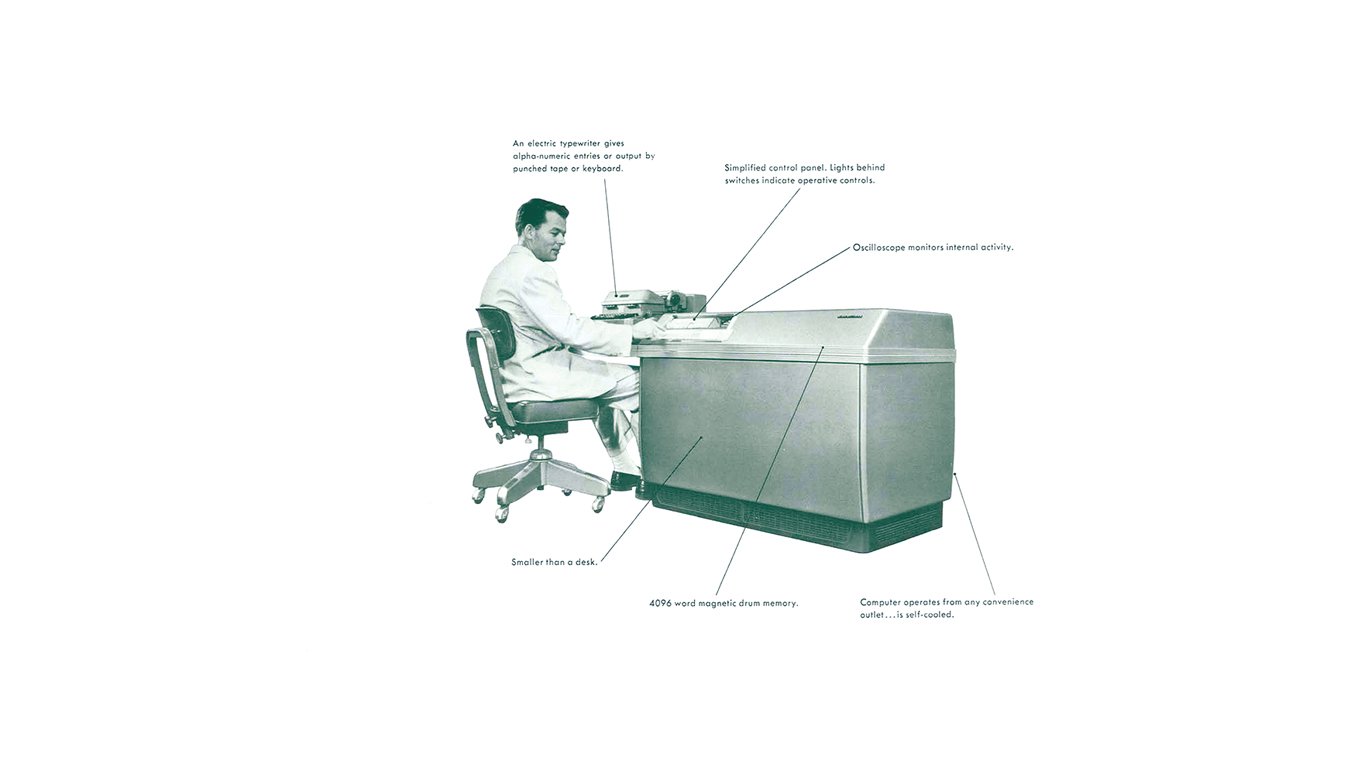Origins of: The Personal Computer
A nearly 70-year-old 800-pound machine found in a German basement last November turned out to be, according to the website Ars Technica, an innovation that changed the course of computer history. And it has its roots at Caltech.
Known as a Librascope General Precision-30 (LGP-30), the machine was designed by Caltech researcher Stanley Frankel in 1954. Frankel, who had performed calculations for the Manhattan Project using the first electronic computer, ENIAC, was recruited by Caltech in the early 1950s to head the Institute’s new digital computing unit. The LGP-30, which Frankel described as a “simple general purpose computer,” was considered small at the time though it weighed as much as a grizzly bear. It was called MINAC before a Glendale-based company called Librascope licensed the design and hired Frankel and Caltech graduate student James Cass (BS ’50, MS ’53) to create a production-ready product.
The result was the first personal computer: a desk-sized single-user machine that plugged into a wall socket. It contained 113 vacuum tubes for logic circuitry, and its primary memory device was a magnetic drum—a metal cylinder that measured 6.5 inches in diameter and 7 inches long. Data was entered and received through an attached Flexowriter, which was a typewriter that used punched paper tape. “Much of the computer hardware before the LGP-30 used far too many vacuum tubes,” says Al Barr, professor of computer science at Caltech. “Vacuum tubes used a great deal of electrical power, produced a lot of heat, and were fairly unreliable since they frequently burned out like incandescent light bulbs. The LGP-30 used a goodly amount of solid-state diode logic to reduce the number of vacuum tubes, increasing its reliability and decreasing its power use. The hardware design was one of the stepping stones that opened the door to the modern computer revolution.”
The LGP-30, which could be used for a variety of mathematical and applied engineering computations, was released in 1956 at a reported cost of $47,000 (around $500,000 today). Although more than 500 units were sold through the 1960s, at a time when most designs sold just a handful, only 45 were sold in Europe. This makes the discovery of an intact LGP-30 all the more noteworthy.

